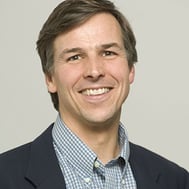In our work at Insight Experience, we focus on communication as a key lever of leadership. It’s never been more important than right now, when many are facing crucible moments in and outside their business.
Four key elements of great leadership communication are constant, but they must be put in the current context to remain effective.

Good strategic communication, along with the priorities you set for the business and how you spend your time, is one of three critical drivers of your effectiveness as a leader. This is proven time and again in our leadership simulation experiences. While leadership decisions about time, priorities, and communication are nonfinancial, they are leading indicators of results. This is because together they are core drivers of employee engagement and performance. These three leadership actions and behaviors, grounded in your values, will drive not only direction for the business but also the culture you create or reinforce.

It may be useful to consider the four key communication elements and how you can adjust them now to answer the questions your people are really asking- whether they say so or not.
Content and Context
This is where we as leaders address the “big picture”: What is our strategy? Where are we going and why? How do I connect to it? In the context of the current crisis, this element is challenging because so much is unknown and changing. Although you cannot have clear answers to everything right now, the more you can share about the context you see and what it means for the business, your customers, and your people, the better.
Empathy and Energy
As much as they want to know the big picture, your people want to know equally how you are feeling about it—and whether you understand how they are feeling. They will read as much into your tone and demonstration of true empathy as they do into your content and context. In fact, long after the content of your message is forgotten, they will remember how you made them feel.
Accountability
Once they have processed the content and tone of your message, your employees will be asking more specifically “what does it mean for me”? Given that we are in an extraordinary time and people are adapting to so much change and disruption, they are rightly asking: What do you need me to do? What should I do differently? Many are likely asking: How can I help? Addressing this dimension specifically enables people to take action productively on what matters now.
Consistency
Consistency is the “litmus test” for you as a leader. It’s what your people are looking for, and a key building block of trust. Even in the best of times, it’s challenging to ensure that all your words and actions are consistent across people and time. In crucible leadership moments like these, it’s both more challenging and even more important. Step back before you communicate and think about the alignment of all the elements above with your decisions and actions. That’s what your people are doing.
It’s useful to put these elements in the context of real situations and examples. Below is a recent one from Arne Sorenson, Marriott CEO, about the impact of the COVID-19 crisis on Marriott and its employees. It’s been widely praised, and you can see all the elements at work.
As you think about your next upcoming communication challenge in this evolving crisis, consider the four elements above and what they mean to your people now. What do they need? Some of your communications will likely be defining moments for you as a leader. What you say, how you say it, and how you make people feel will be remembered long after the crisis has passed.
For more in the Crucible Communication series, explore:

Nick Noyes
Nick Noyes is a co-founder and partner of Insight Experience. He has more than 20 years of experience working with clients on education and strategic change initiatives. His work spans many activities, including the design of simulation-based educational programs, executive facilitation, coaching, and action learning initiatives. In addition to the leadership he provides for Insight Experience and its clients, Nick is responsible for the company’s strategy, business development, and marketing efforts.









